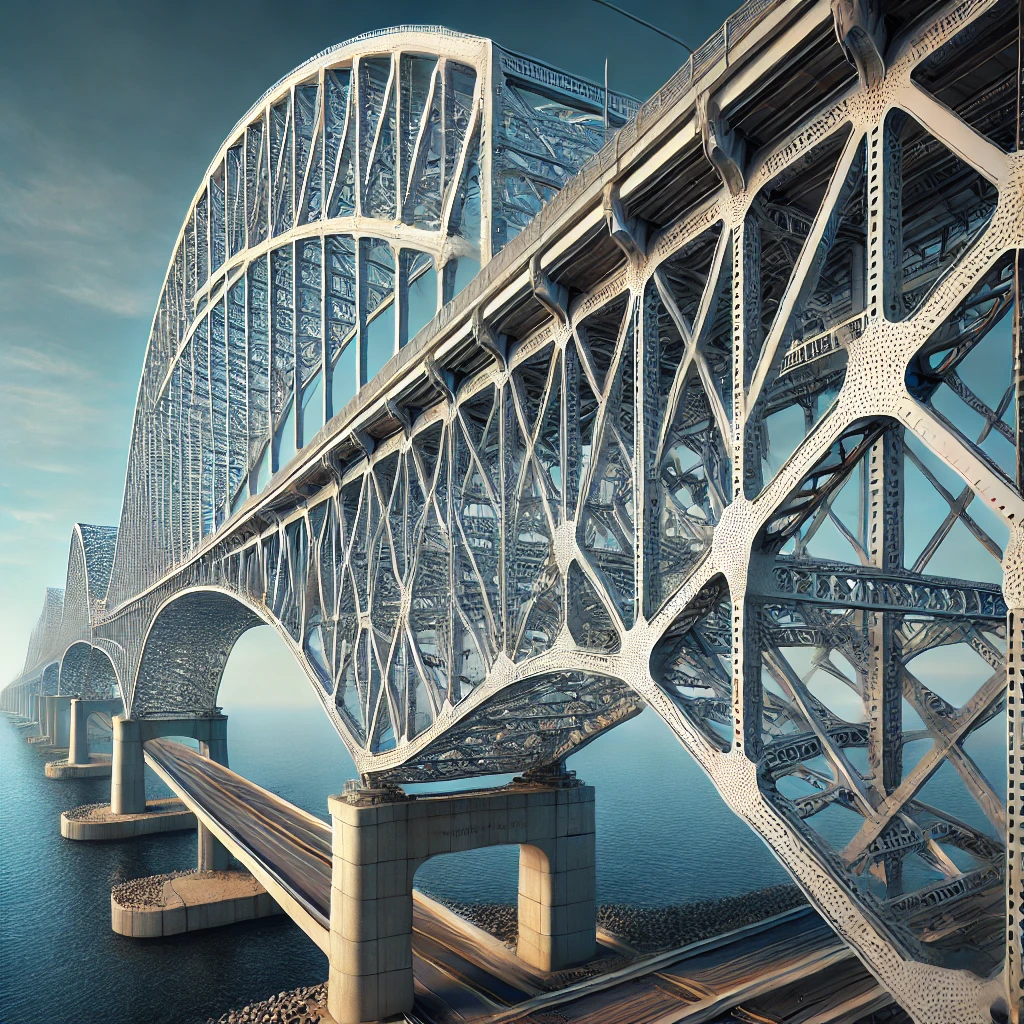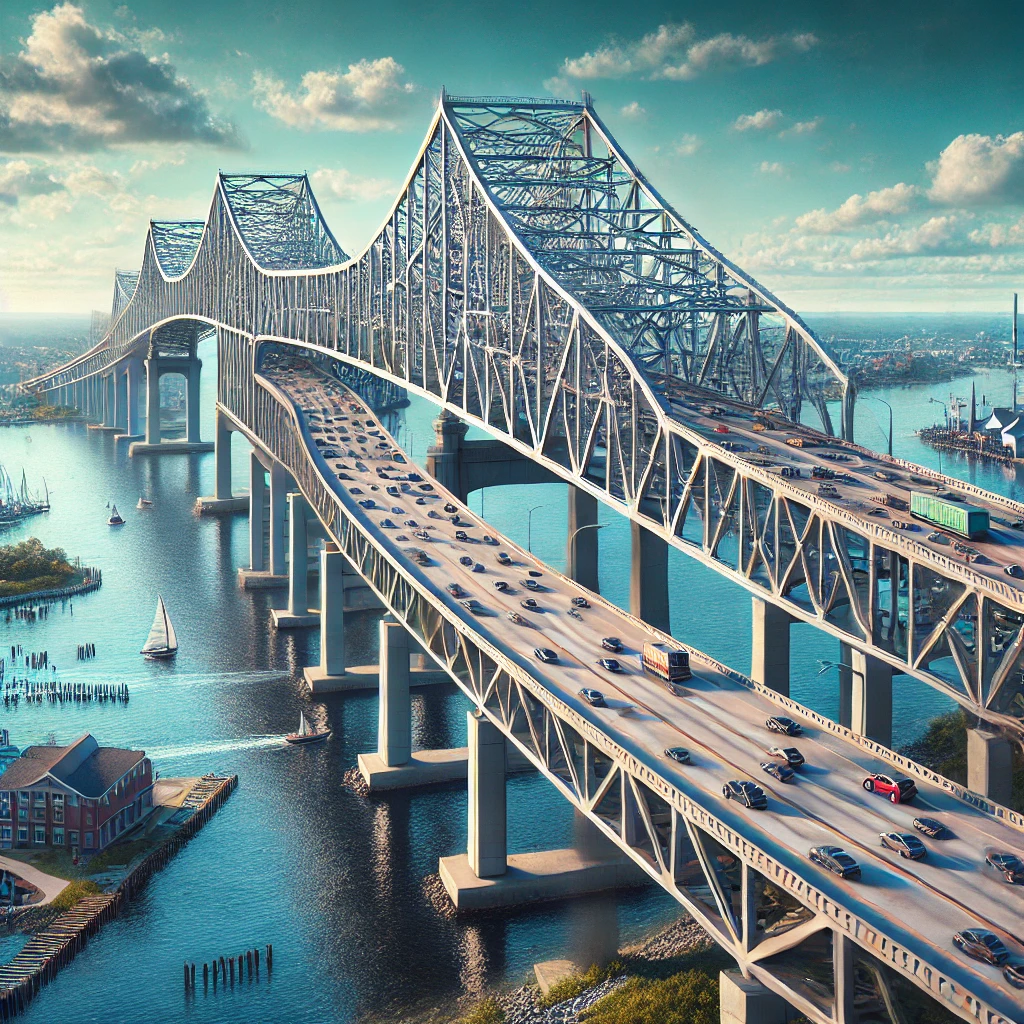Introduction
The Francis Scott Key Bridge stands as an iconic structure that seamlessly blends functionality with historical reverence. Spanning the Patapsco River in Maryland, this bridge not only serves as a vital transportation link but also carries with it the legacy of an American hero. Named after Francis Scott Key, the author of the U.S. national anthem, the bridge is more than just a feat of engineering; it is a symbol of resilience and unity.
This remarkable structure connects communities, facilitates commerce, and offers breathtaking views of the surrounding area. As the longest continuous truss bridge in the United States, it embodies innovation and endurance. Its story, from inception to its role in modern times, is a testament to human ingenuity and the enduring spirit of America. In this article, we’ll delve into the rich history, architectural brilliance, and cultural significance of the Francis Scott Key Bridge.
Historical Background
2.1 Origins of the Bridge
The need for a reliable crossing over the Patapsco River became apparent as Maryland’s industrial and economic activities grew. Early in the 20th century, transportation planners recognized the need for an infrastructure solution to address increasing traffic demands. After decades of proposals and debates, construction of the bridge was finally approved in the mid-20th century. It was envisioned as a critical part of the Baltimore Beltway, designed to support regional growth and enhance connectivity.
2.2 The Legacy of Francis Scott Key
Francis Scott Key, for whom the bridge is named, holds a revered place in American history. Known primarily for penning “The Star-Spangled Banner” during the War of 1812, his legacy is intricately tied to the defense of Fort McHenry—a location visible from the bridge itself. Naming the structure after Key was a deliberate choice to honor his contributions to the nation and his ties to Maryland.
2.3 Construction Timeline
The construction of the Francis Scott Key Bridge began in the late 1960s and culminated in its opening to the public in 1977. Designed by the Maryland Transportation Authority, the bridge was a monumental project, involving cutting-edge techniques and significant resources. Overcoming logistical challenges, such as working in a busy maritime environment, the bridge was completed on schedule and within budget, becoming a source of pride for Marylanders.
Architectural and Engineering Features

3.1 Design and Structure
The Francis Scott Key Bridge is a continuous truss bridge, a design chosen for its strength and durability. Its sweeping curves and lattice-like framework make it both visually striking and structurally efficient. Constructed primarily of steel and concrete, the bridge is built to withstand harsh weather conditions and heavy traffic, ensuring safety and longevity.
3.2 Dimensions and Capacity
Stretching over 1,200 feet in length and rising 185 feet above the water, the bridge is a towering presence on the Baltimore skyline. Its impressive span accommodates six lanes of vehicular traffic, supporting tens of thousands of vehicles daily. With its high clearance, it also allows large maritime vessels to pass underneath, making it a crucial asset for both road and sea transportation.
3.3 Environmental Considerations
During its construction, careful measures were taken to minimize the environmental impact on the surrounding Patapsco River ecosystem. From using eco-friendly materials to implementing advanced water management systems, the bridge’s planners demonstrated a commitment to sustainability. Today, these efforts continue with regular maintenance and monitoring programs aimed at preserving the local environment.
The Bridge in Modern Times
4.1 Role in Transportation
The Francis Scott Key Bridge plays an indispensable role in Maryland’s transportation network. As part of Interstate 695, it serves as a critical link between Baltimore and its surrounding areas. By alleviating congestion on other routes, it facilitates the efficient movement of goods and people, boosting regional commerce and accessibility.
4.2 Maintenance and Upgrades
Over the years, the bridge has undergone several maintenance projects to ensure its structural integrity and safety. Recent upgrades have included modernizing the lighting system, resurfacing the roadway, and reinforcing key structural components. These efforts not only extend the bridge’s lifespan but also enhance the experience for commuters and travelers.
4.3 Cultural and Scenic Significance
Beyond its practical utility, the Francis Scott Key Bridge holds cultural and scenic value. Offering panoramic views of the Baltimore Harbor, Fort McHenry, and the Chesapeake Bay, it has become a favorite spot for photographers and sightseers. Its towering silhouette against the skyline is a reminder of Baltimore’s industrial heritage and maritime importance.
Conclusion
The Francis Scott Key Bridge is more than a marvel of engineering; it is a living piece of history that connects the past to the present. Its role in facilitating transportation, its architectural brilliance, and its symbolic connection to Francis Scott Key make it a cherished landmark in Maryland. As we look ahead, the bridge’s continued preservation and modernization will ensure it remains a vital part of the region’s infrastructure and identity for generations to come.
FAQs
What is the Francis Scott Key Bridge, and where is it located?
The Francis Scott Key Bridge is a continuous truss bridge spanning the Patapsco River in Maryland, serving as part of Interstate 695.
Why is it named after Francis Scott Key?
It honors Francis Scott Key, the author of “The Star-Spangled Banner,” who played a significant role in American history.
When was the Francis Scott Key Bridge constructed?
Construction began in the late 1960s, and the bridge was opened to the public in 1977.
What makes the bridge unique from an engineering perspective?
Its continuous truss design, high clearance, and durable construction make it a standout example of modern engineering.
Can pedestrians access the bridge?
Currently, the bridge is not designed for pedestrian use, focusing primarily on vehicular traffic.
What are some nearby attractions to the bridge?
Fort McHenry, the Baltimore Harbor, and the Chesapeake Bay are notable attractions visible from the bridge.
How does the bridge contribute to the local economy?
By facilitating efficient transportation and trade, it plays a crucial role in supporting Maryland’s economy.
Are there ongoing or planned renovations for the bridge?
Periodic maintenance and upgrades are carried out to ensure the bridge’s safety and functionality.
Is the Francis Scott Key Bridge a toll bridge?
Yes, it is a toll bridge, with fees collected to fund its maintenance and operations.
What safety measures are in place for travelers on the bridge?
The bridge features advanced monitoring systems, regular inspections, and robust construction to ensure traveler safety.




